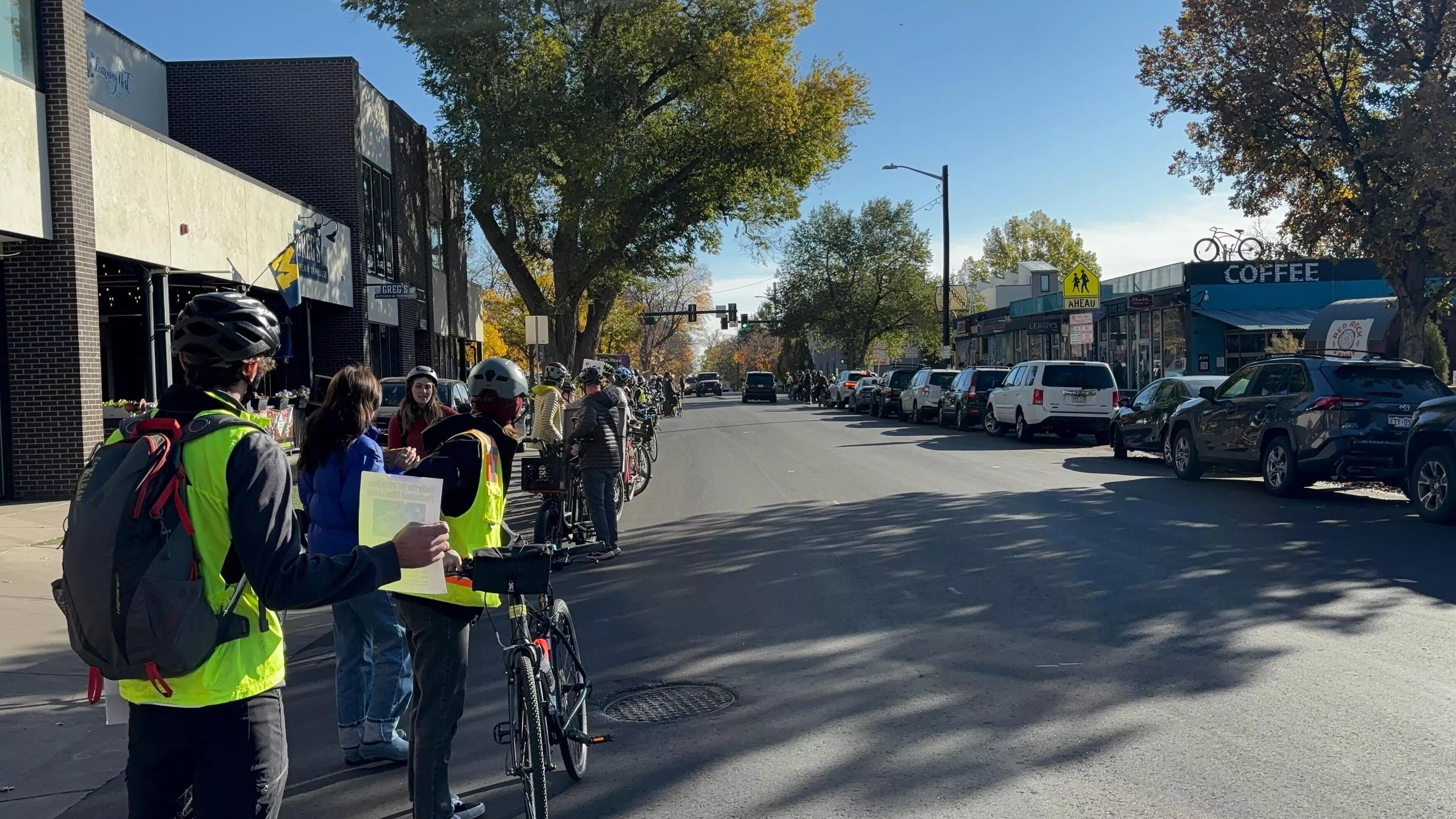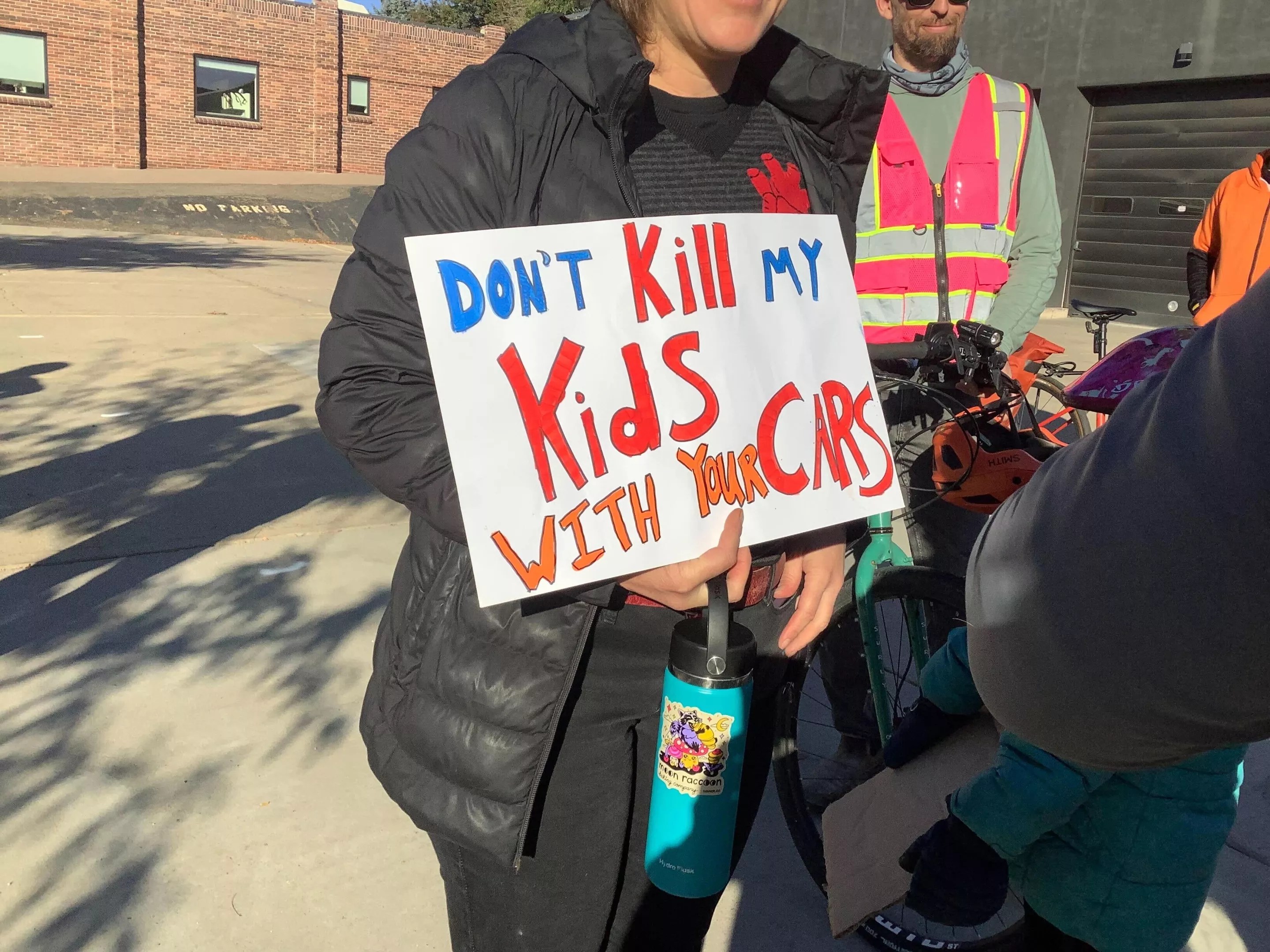
Ryan Frazer

Audio By Carbonatix
You spoke. We listened.
Three months ago, Denver’s Department of Transportation & Infrastructure emailed these bolded words to describe their “final” plan for a protected bike lane along West 29th Avenue.
But after watering down their plans twice to remove protection for bicycle riders and make room for more parking spaces, their actions beg the question: Who, exactly, is the city’s Department of Transportation & Infrastructure listening to? Are they listening to the 128 residents who filled out DOTI’s West 29th Avenue survey and asked for protected bike lanes? Are they listening to the thousands of Denverites who contributed to the Denver Moves Everyone plan that calls for a protected bike lane on West 29th? Are they listening to the 105,000 Denver residents who voted for the 2021 RISE Denver GO Bond that promised to build Denver Moves’ network of safe, high-comfort bike lanes?
Or is DOTI listening primarily to the most comfortable and privileged among us? Residents who, despite owning million- dollar homes with a driveway and garage, complain loudly that the city dares take away their “personal” on-street parking space?
Denver, make your New Year’s Resolution Count!
We’re $15,500 away from our End-of-Year campaign goal, with just a few days left! We’re ready to deliver — but we need the resources to do it right. If Westword matters to you, please contribute today to help us expand our current events coverage when it’s needed most.
Why, after hundreds of survey responses, a detailed parking study and an analysis of numerous alternatives, did the planners and engineers at DOTI initially decide that a protected bike lane along the entire 29th Avenue corridor was the best solution? I will allow DOTI director Amy Ford to explain, as she stated in a September 16 email addressed to residents and business owners of 29th Avenue:
We recognize that how we use our street space to effectively balance safety and access for all includes trade-offs. We believe that the current use of driveways, garages, private parking and our assessment of how street parking is used (approximately 30 percent utilized in this area) allow for that balance. This solution includes DOTI and national design standards, a deep community concern about vehicle speeds, a desire to maintain on-street parking in commercial areas and a strong preference from the nearby community for a protected bike lane.
29th Avenue is designated as a high-injury street, which experiences high speeds, large volumes and crashes resulting in serious bodily injuries and fatalities. The improvements on 29th Avenue are meant to improve safety and reduce crash risk by utilizing treatments that have proven to slow vehicles speeds and volumes.”
What changed between September 16 – when Director Ford appeared committed to building protected bike lanes along the entire corridor (save for two commercial blocks) in the interest of safety – and October 18, when DOTI announced that there would be no protected bike lane between Sheridan and Tennyson? Media reports have documented how DOTI met privately with a handful of residents and businesses after the public comment period had ended and the plans had been declared final.

Protester at 29th Avenue bike demonstration.
David Chen
The question of who gets veto power over the design and use of our public spaces is ultimately a political one, and the buck stops with our mayor. Mayor Mike Johnston should instruct Ford to rapidly build out the 230 miles of bicycle lanes proposed in Denver Moves with overwhelming community support. Engaging in minute litigation over every block ultimately privileges the wealthy and connected. We must not allow a handful of these residents to override infrastructure improvements that affect the health, safety, climate and quality of life of the entire city.
Soon after her appointment, Ford published three potentially transformative directives instructing her department to prioritize Safety First, People Priority and Mode Shift. Disappointingly, many of the bikeways subsequently implemented during her tenure have used outdated “share the road” designs rather than true protection and separation for people riding bikes. Painted “sharrows” and the ubiquitous white plastic sticks seen on the Sherman Street neighborhood bikeway south of the Capitol Building expose an alarming disregard for the safety and comfort of people on bikes. Yes, these “neighborhood bikeways” are cheap to build and preserve parking, but squeezing bikes alongside cars is dangerous for riders, frustrating for drivers and will not achieve our safety and mode-shift targets.
Unless our city’s leaders are committed to truly transforming our streets and willing to disrupt the car-centric status quo, they should stop pretending that we will come close to achieving these goals.
David Mintzer is a physician and transportation advocate.
On weekends, Westword.com publishes commentaries on matters of interest to the community; the opinions expressed in these are those of the authors, not Westword. Have one you’d like to submit? Send it to editorial@westword.com, where you can also comment on this piece.